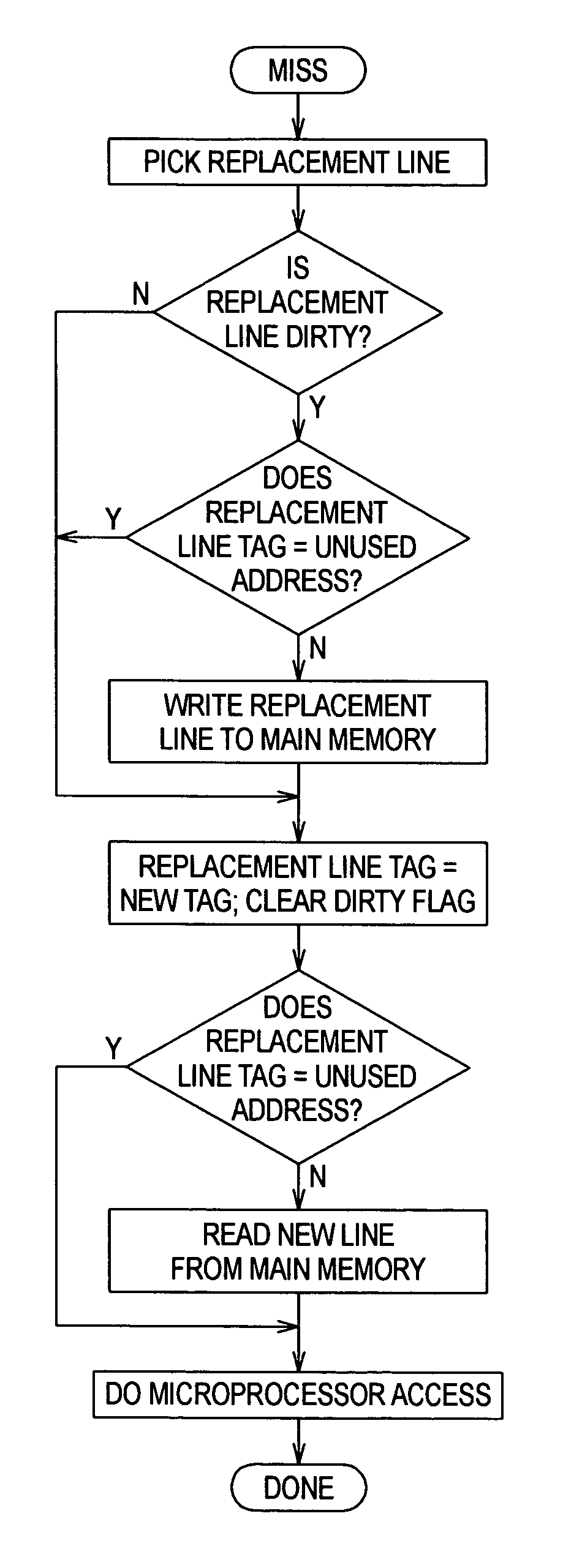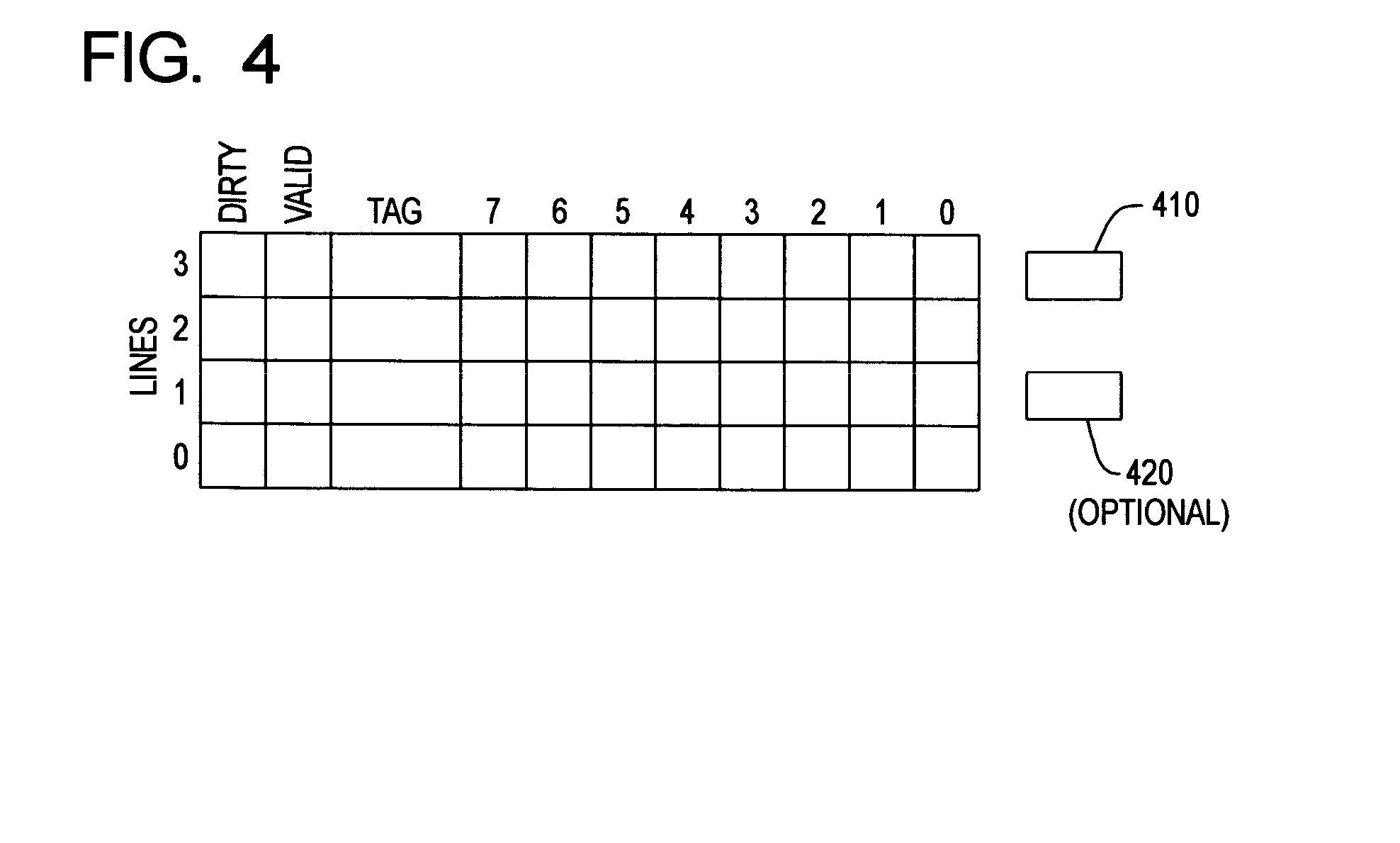Method for reducing access to main memory using a stack cache
a stack cache and main memory technology, applied in the field of microprocessor stack cache design, can solve the problems of reducing the number and memory size of sram chips that can be included in a computer system, affecting the efficiency of stack cache logic, so as to reduce the number of accesses to main memory
- Summary
- Abstract
- Description
- Claims
- Application Information
AI Technical Summary
Benefits of technology
Problems solved by technology
Method used
Image
Examples
Embodiment Construction
[0036]While this invention is susceptible of embodiments in many different forms, there are shown in the drawings and will herein be described in detail, preferred embodiments of the invention with the understanding that the present disclosure is to be considered as an exemplification of the principles of the invention and is not intended to limit the broad aspects of the invention to the embodiments illustrated.
[0037]The present invention is directed to a stack cache. Specifically, the stack cache includes a normal data cache that is enhanced with a stack-oriented miss algorithm. The stack cache is geared for multi-stack performance, yet can be shared with non-stack data accesses. Supported stack accesses include pushes, pops, normal reads and normal writes. The only information required from the processor, in addition to the memory bus, is the current stack pointer value.
[0038]More specifically, a write-back, line-oriented, stack cache structure is used. The cache structure includ...
PUM
 Login to View More
Login to View More Abstract
Description
Claims
Application Information
 Login to View More
Login to View More - R&D
- Intellectual Property
- Life Sciences
- Materials
- Tech Scout
- Unparalleled Data Quality
- Higher Quality Content
- 60% Fewer Hallucinations
Browse by: Latest US Patents, China's latest patents, Technical Efficacy Thesaurus, Application Domain, Technology Topic, Popular Technical Reports.
© 2025 PatSnap. All rights reserved.Legal|Privacy policy|Modern Slavery Act Transparency Statement|Sitemap|About US| Contact US: help@patsnap.com



